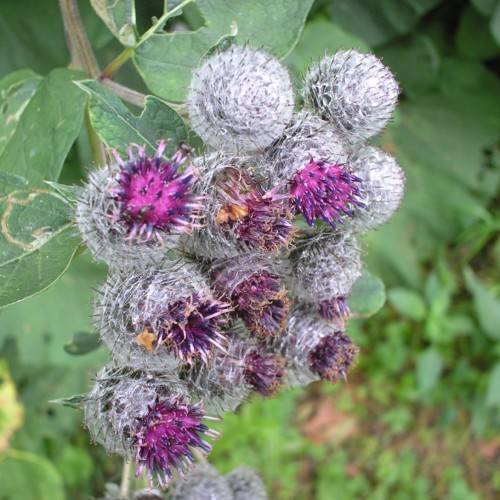
Burdock
Arctium X Mixtum
Watering:
Minimal
Hardiness Zone:
Flowers:
Flowers
Sun:
full sun,part shade
Fruits:
Fruits Ready In Fall
Edible:
Yes
Leaf:
Yes
Growth Rate:
Low
Salt Tolerant:
Yes
Invasive:
Yes
Care Level:
Medium
watering
Burdock (Arctium minus) should be watered regularly and consistently. During the active growing season in Spring and Summer, Burdock require an inch of water per week. During especially dry spells, additional watering may be needed. Once established, these plants are drought resistant and don't require as much water during dry weather. When watering, it’s best to soak the soil, especially for young or newly planted Burdock. During the Fall and Winter, water lightly to prevent the soil from drying out too much. Water less frequently when the weather turns cold.
sunlight
Burdock (Arctium minus) prefers indirect sunlight, but can survive in full sun if the soil remains consistently moist. The plant does best in temperatures from 50 to 77°F (10 to 25°C); however, it can survive as low as 32°F (0°C) for short periods of time. During the summer months, the plant should receive 8 hours of light a day to promote vigorous and healthy growth. In winter months, 6-8 hours of light per day is preferable.
pruning
Burdock (Arctium minus) should generally be pruned in late spring or early summer, before the flowering season begins. Pruning should remove dead or damaged stems and branches, and any branches that have crossed over each other. It is also beneficial to thin out congested branches to allow for new growth and better air circulation. Pruning should remove no more than 1-third of the plant, and the herbaceous stems should be cut down to their base. As this plant is an aggressive spreader, any remaining flowers should be cut off and discarded to prevent self-seeding.
